
Four-year-old April is sat on a cosy two-seater sofa sewing a star, but has to stop to independently rethread her needle before continuing with the task. Beside her, a child is exploring a bead box and carefully threading those she has chosen to make jewellery. The sewing area contains a unit adorned with fresh flowers and tempting resources including a wide choice of donated fabrics, brightly coloured buttons, a pin cushion, needles and jar with scissors.
This is a typical day at Poppies Pre-school in Laurencekirk, Aberdeenshire, where nursery head Sharon Imray instilled sewing into the setting's continuous provision many years ago. Sewing links with their Froebelian ethos (see Further information), regarding children as autonomous learners who learn best through hands-on activities and benefit from interactions with other children and adults who are tuned in to their needs. Friedrich Froebel (1782-1852) also wrote about ‘Occupations’, which support children to express their thoughts and feelings through creatively using a wide range of media – of which sewing is one.
‘We have created a comfortable area for sewing to make it really special for the children. Sewing is something that they can do to relax and create something – yesterday children were using the sewing machine to make lavender pillows from Spiderman fabric,’ says Sharon.
‘Sewing is very mindful because it enables you to be still and slow, and we all need some of that during the day. It is therapeutic to sew a stitch, up and down on the fabric; it is relaxing to sit with a friend or adult and just chat and sew.’
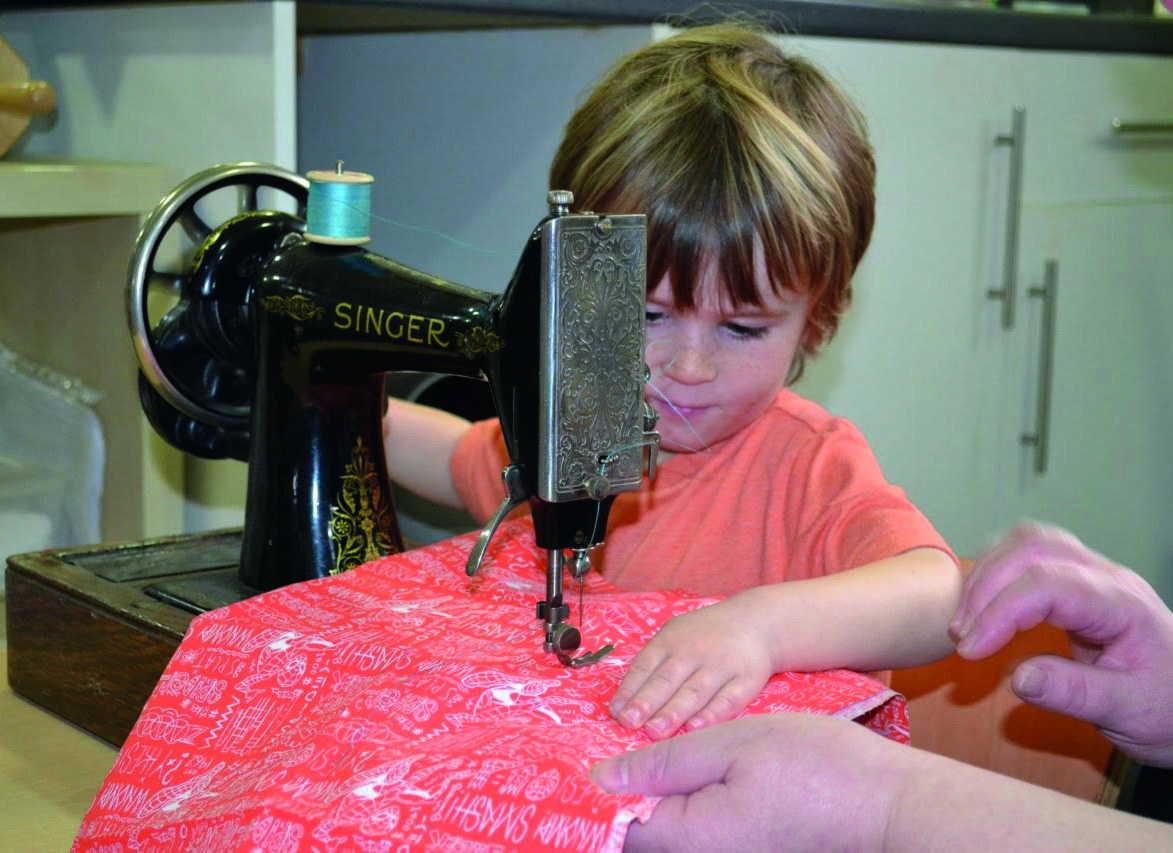
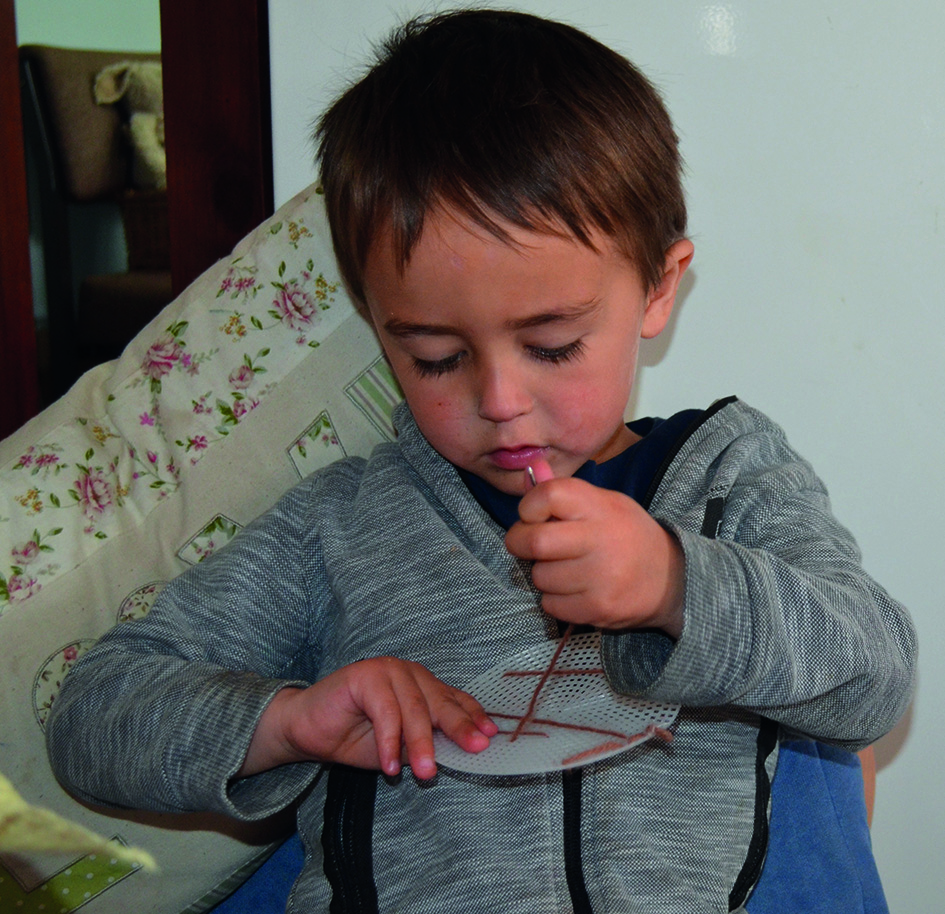
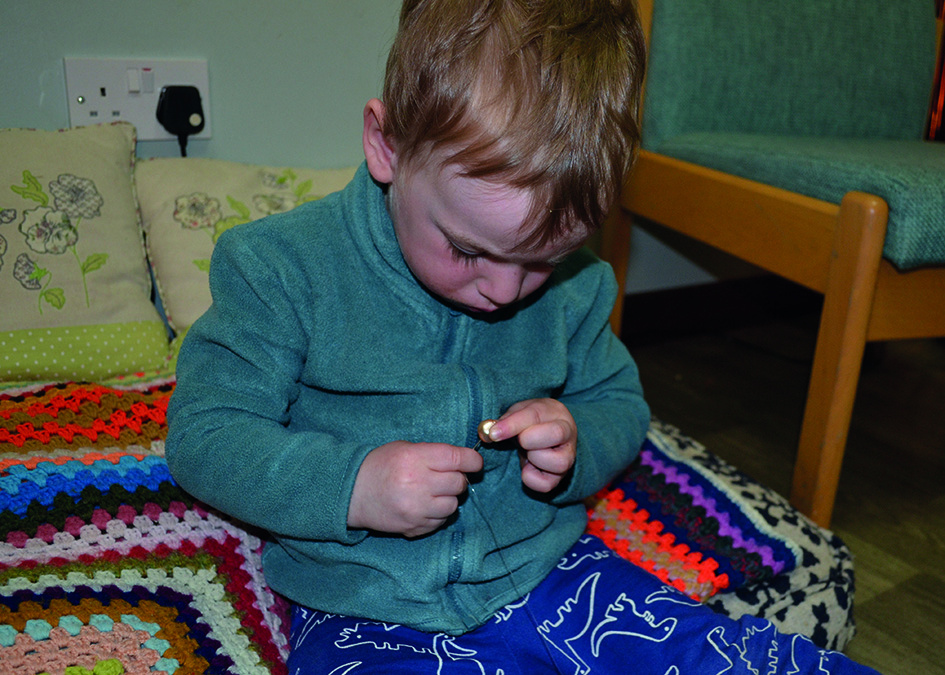
SEW THE SEED
At Poppies, children's sewing journey starts when they are babies through exploring fabrics – different colours, patterns and textures. Younger children are shown how to thread wooden pieces onto clothes lines then gradually move into the sewing area. They are introduced to lacing activities, using card with holes, and threading needles before being shown simple stitches and using different widths of threads and yarns. Once they have mastered those skills, children can progress to using the sewing machine.
Staff show children how to use the sewing area safely; storing pins and needles in the pin cushion, replacing scissors in the jar and putting the lid on the bead box. Under-threes are not allowed to use the sewing machine, which is always supervised by an adult. They observe the position of the child on the chair, show them how to work the pedal to control the speed and the needle, and ensure children pay attention and place their hands on either side of the fabric with their thumbs tucked in.
Rather than the finished product, it is the process of sewing that is the focus at Poppies, but children do enjoy using their skills to make jewellery, embellish clothing and design their own dressing-up outfits – capes fashioned from old pillow cases are popular for this. Children also use lengths of fabric for cloaks and improvise with stretchy hairbands as waistbands for tucking in or sewing on pieces of fabric to make flowing skirts.
Sharon enjoys sewing for pleasure, as do other team members, including Debbie the cook who is an expert with a sewing machine. They hold regular sewing bee sessions to support each other's projects and share their skills with staff members who want to learn.
‘Nurseries can start small with a sewing box and supporting children how to thread the needle and do some stitches, practising up and down with the needle and thread. When staff and children become confident with that then they can move their skills on,’ advises Sharon.
‘Sewing needs perseverance. Children need to learn how to thread a needle, which isn't easy, and work out how to get their stitches to stay in place with a double stitch or a knot so that they can work towards a finished item. There's a lot to learn and it's a skill for life,’ she adds.
Benefits of sewing
- Fine motor skills – sewing strengthens children's finger muscles and wrists.
- Encourages hand-eye co-ordination.
- Numeracy skills as they explore shapes, pattern, sorting, measurements and estimation.
- Builds self-confidence as they learn a new skill and gain a sense of accomplishment.
- Encourages patience, problem-solving, perseverance and concentration.
- Develops imagination and creativity as children plan, design and make items.
- Communication and language skills as they learn to listen and follow instructions, discuss their work and converse while sewing.
- Sustainability as children learn the skill of making and repairing clothing.
- Challenging gender stereotypes by demonstrating it is an activity for both boys and girls.
- Exploring culture and heritage – sewing is a cross-cultural activity that has been passed down through generations. Links to cultures can be made through fabrics and patterns.
CASE STUDY: Easter Carmuirs Primary School and ELC Class, Falkirk
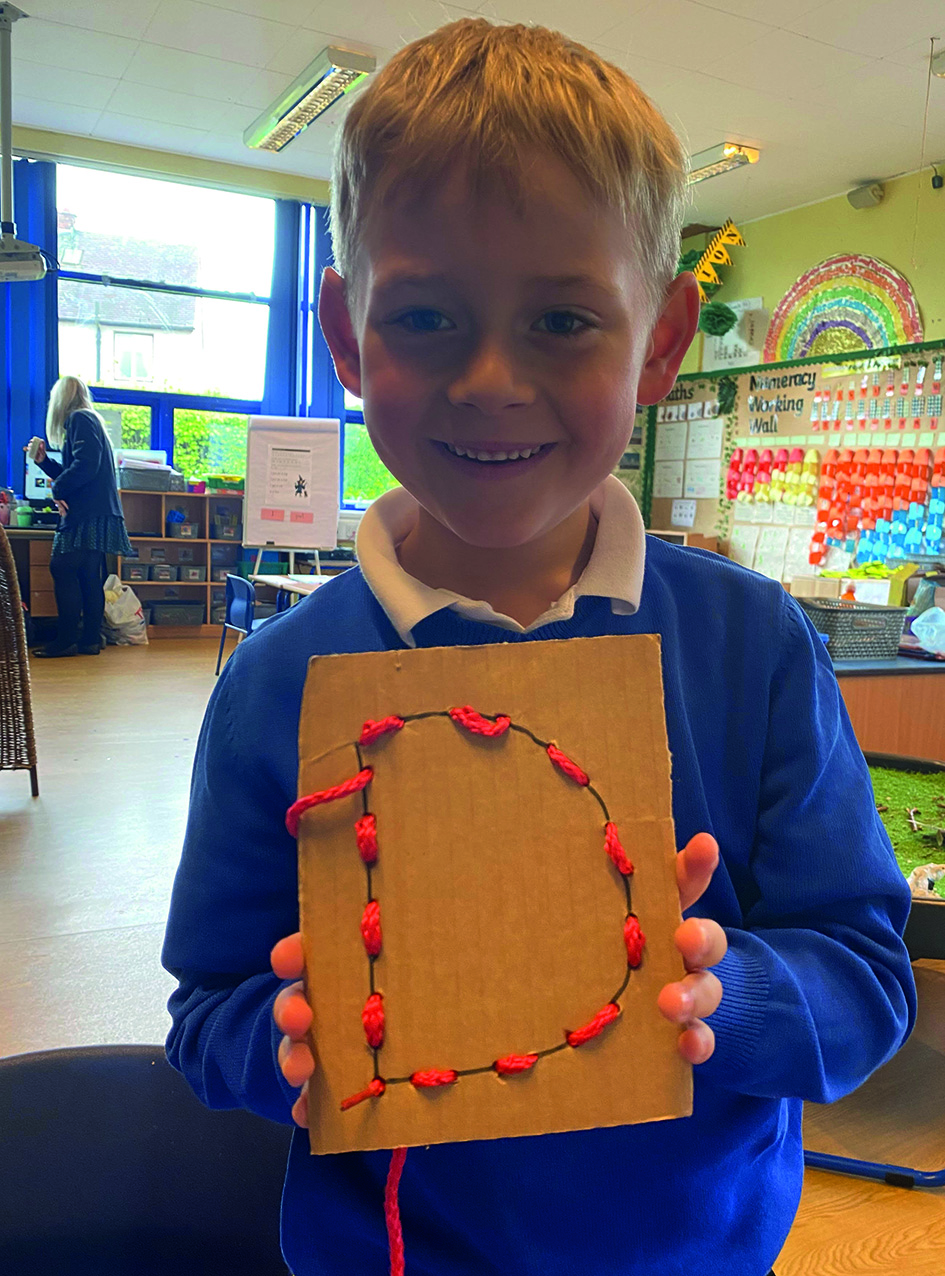 ‘We wanted to change the way we work by looking closely at our curriculum and the experiences we were providing to support children's developing motor skills, creativity, engagement and language,’ says principal teacher Paula Arundel, who introduced sewing to her school while undertaking the Froebel and Childhood Practice Certificate at the University of Edinburgh.
‘We wanted to change the way we work by looking closely at our curriculum and the experiences we were providing to support children's developing motor skills, creativity, engagement and language,’ says principal teacher Paula Arundel, who introduced sewing to her school while undertaking the Froebel and Childhood Practice Certificate at the University of Edinburgh.
‘I learned to sew when I was at school, but it's an experience and life skill that many of our children don't have access to, so I thought it was important to bring it in, especially to engage four boys [aged five and six]. I wanted to focus on them because they had weak fine motor skills – their letter formation was very poor and, in some cases, illegible, and they had immature pencil grip for their age, using wrist movements rather than finger movements to draw and write.’
Paula set up a sewing area within continuous provision and started by offering threading activities with pipe cleaners, laces, foam lacing shapes, cotton reels and beads for all children to freely explore. She noted that while children could independently thread beads, they didn't follow the typical ‘lacing’ pattern when using the resources. Paula introduced lacing boards with the children's initials punched out to encourage them to follow a pattern and be more thoughtful. They talked about how to follow the line of holes, go down through the hole and then back up, which is the same skill for sewing.
‘Although we strive to provide more child-initiated play opportunities, it is also important to have an element of intentional planning to ensure children continue to make progress in their learning, to guide them and provide “teachable moments”,’ explains Paula.
She extended the children's skills by providing embroidery hoops and hessian, and chose plastic needles with large eyes and wool that are easier for the children to handle. ‘The children were initially assisted in threading the needle and then supported with the technique of sewing using a running stitch,’ says Paula. ‘Once confident, the children were given freedom to make their own judgements, thread their needle and create their own patterns and stitches.’
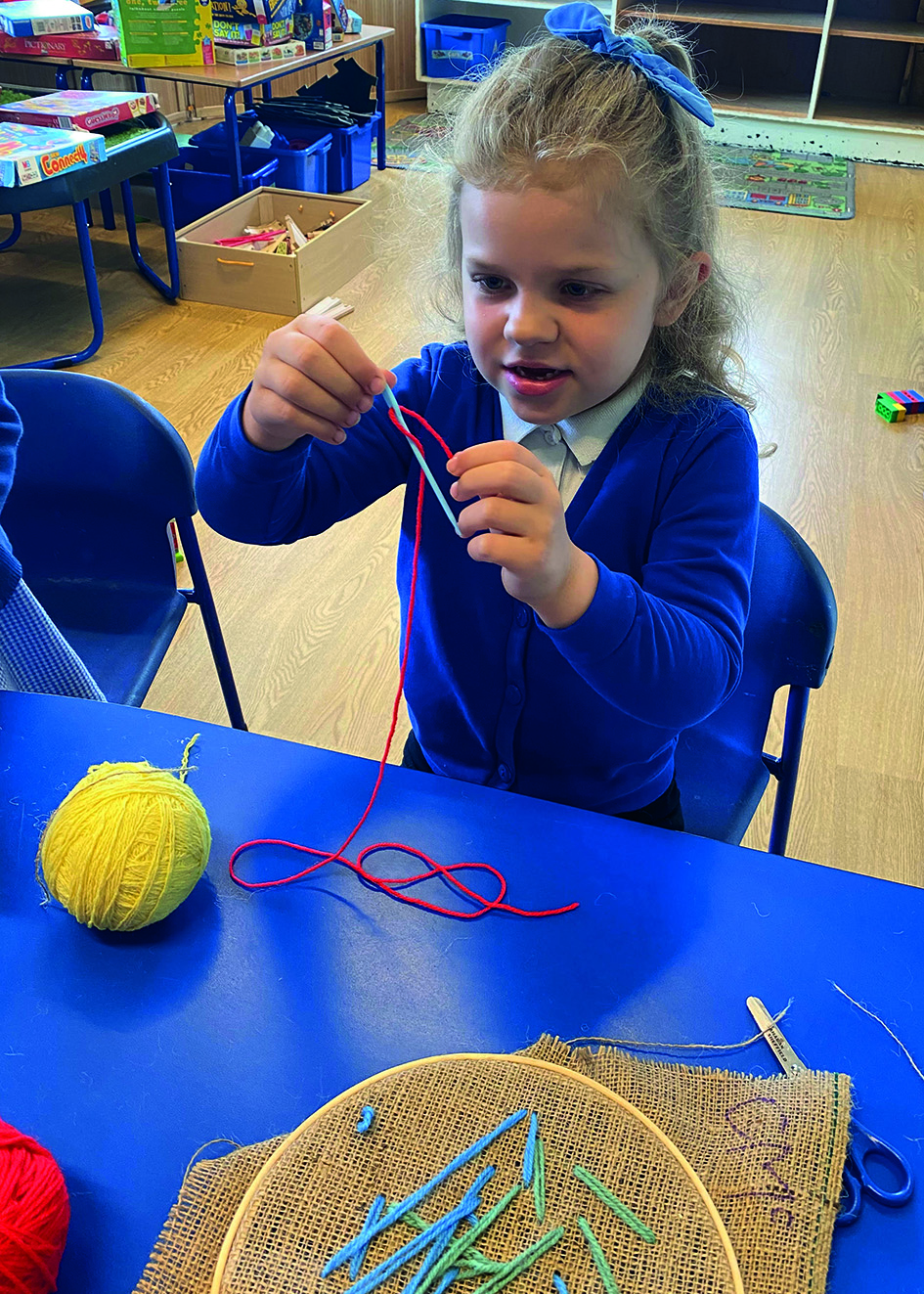 The children had to use their critical thinking and problem-solving skills to work out how to sew inside the hoop rather than circling around it, so that the hoop could then be removed from their embroidery.
The children had to use their critical thinking and problem-solving skills to work out how to sew inside the hoop rather than circling around it, so that the hoop could then be removed from their embroidery.
Paula's key findings from the sewing activities include:
- Improved fine motor skill, manipulation and hand strength.
- Improved focus and concentration.
- More co-operative play.
- Children developed their language as they discussed their sewing and through discussing techniques, symbolism, mathematical language and general conversation.
Getting started
Setting up a sewing area need not be expensive or onerous. Put a couple of comfy chairs in a well-lit area along with a sewing box or unit containing a few simple resources, which you can source from donations and charity shops. Have staff available to role model and support children. Ask families and the local community for advice or watch some online tutorials.
Equipment:
- Rope, string, pipe cleaners, laces, ribbons, wool, embroidery yarn and thread
- Lacing cards (you can make these yourself with a hole punch and card)
- Beads and buttons
- Plastic and metal needles with a range of eye sizes
- Needle threaders
- Scissors
- Pins
- Embroidery hoops
- Range of fabric









